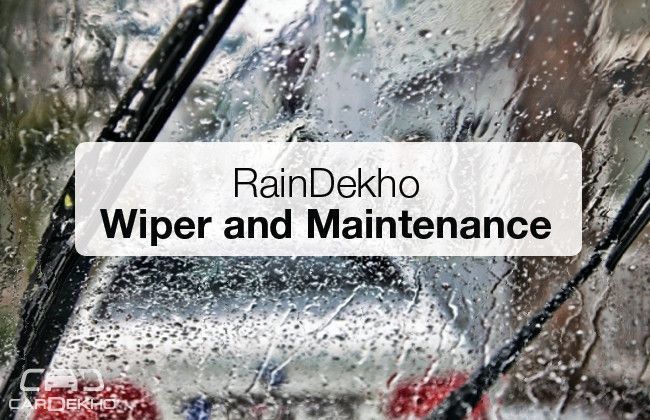The Wheels of Balance - Wheel alignment and balancing
Modified On Aug 12, 2014 04:53 PM By Bala Subramaniam
- 4 Comments
- Write a comment
Tyres are supposed to spin accurately on their axis otherwise it will cause uneven wear on tyres thus decreasing their life. And during the monsoon, the risk just multiplies. One of the primary reasons for improper wheel alignment is when a car is driven through potholes or broken patches of roads. These patches are further enhanced by monsoon rains as water fills in deep holes, and drivers tend to drive through them without realising how deep they are.

If the tyres of your car run on steel rims, another parameter coming to play is wheel weight balancing. Notice the small weights stuck on your rims edges. These are wheel weights and are necessary for the rims to spin accurately on their axis. If you have alloy wheels equipped on your vehicle then you need not worry as they do away with wheel weights.
Wheel alignment and wheel balancing are often confused with each other. Apart from the fact that both of them affect the ride quality and handling of your car, the two have nothing to do with each other. On one side if a wheel is out of balance, it causes vibration at highway speeds, which can be felt through the steering wheel or the seats. If the wheel alignment is out, it causes excessive tyre wear and steering or tracking problems.
Wheel alignment consists of adjusting the angles of the wheels. The wheels are adjusted to be perpendicular to the ground and parallel to each other. Wheels alignment’s purpose is to obtain maximum tyre life and to keep the vehicle tracking straight and true when driving along a straight and level road.
Wheel alignment process involves three main measurements - caster, camber, and toe.
Toe is the most common angle that is adjusted. Toe in or positive toe is when the front of the wheel pointing in towards the center of the vehicle and toe out or negative toe is the front of the wheel pointing away from the center of the vehicle.
Caster is the movement of a wheel forwards or backwards. If wheels have uneven caster, the wheel with the most caster will try and steer the vehicle away from that side, which causes a pulling effect.
Camber angle is the tilt of the front wheels, inwards or outwards and is noticeable when viewed from the front of the vehicle. Positive camber is if the top of the wheel is tilted out and a negative camber is if the top of the wheel is tilted in. Uneven camber angles cause the vehicle to steer towards the side with more camber.
Symptoms that tell your car is out of alignment:
Uneven or rapid tyre wear
Drifting or pulling away from a straight line
Wandering on a straight level road
Spokes of the steering wheel off to one side while driving on a straight and level road.
Wheel balancing prevents the tyres and wheels to spin without any vibrations and is done by checking for any heavy spots on the wheel-tyre combination. The heavy spots are compensated by placing measured lead weights on the opposite side of the wheel from where the heavy spots are. If a wheel is out of balance, the car will vibrate at highway speeds, which can be felt through the steering wheel or the seats.
Symptoms that tell your car’s wheels are out of balance:
Vibration in the steering wheel at certain highway speeds
Vibration in the seat or floorboard at certain highway speeds
Scalloped or cupped wear pattern on the tyres
Wheel alignment and balancing are two important factors to keep your car healthy through the wheels and tyres. Regularly check your car and be safe.










